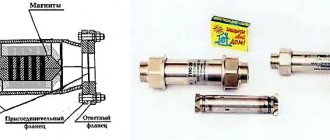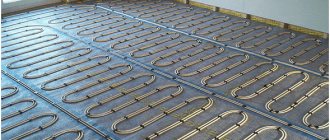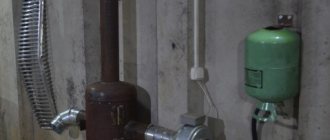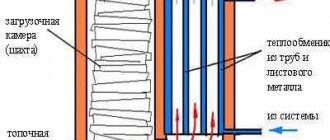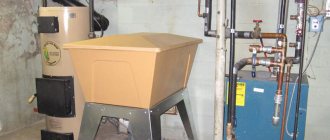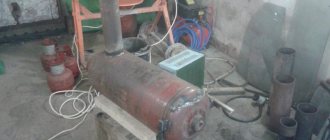Many city apartments today have central heating. It just so happens that the main housing stock in our cities is included in the service sector of utility companies. First of all, this relates to the issues of ensuring heat supply to city apartments during the heating season. The quality of the centralized heat supply system to consumers has always left much to be desired. The reason lies in the inefficiency of the existing service procedure. In addition, rising energy prices are forcing people to look for alternative ways to heat their homes.
Many apartment owners are trying to switch to autonomous heating of their apartments. What difficulties do you have to face in this case and how to make heating yourself - these are the main issues that concern our citizens today. We will try to solve the problem together and find answers to pressing questions.
Selection of radiators and pipes
Any heating system has its own characteristic features that must be taken into account in order to know exactly how best to heat the apartment. What makes the choice of heating devices special in all this is that where some batteries are ideal, others will not be efficient or reliable enough.
The simplest and most painless solution related to the choice of heating components is to contact specialized specialists who will conduct a full analysis of specific conditions and select the most suitable elements for them. However, with a competent approach to the matter, you can carry out this work yourself - it will be enough to consider the features of all possible components and figure out under what conditions a certain type of element should be used.
Replacing a heating riser - stages of work
Replacing the heating riser is carried out in a certain sequence. First of all, the old heating, sewerage and water supply risers are dismantled. For this:
- the risers are blocked, water is released from them (you need to contact the housing office);
- old pipes are cut out with a grinder, after which they are dismantled by pulling them out of the floor slabs;
- battery installation locations are marked;
- install the battery using a hammer drill and level;
- after installing the batteries, the pipes are connected;
- The bottom and top of the radiator are connected to their neighbors.
Next, replacing the heating riser will be discussed in more detail. The instructions will allow you to do the work yourself.
Cast iron radiators
Heating appliances made of cast iron have a long service life and fairly high heat transfer. In addition, a very important feature of cast iron batteries is their inertia - cast iron takes a very long time to gain heat, so it takes a lot of time to warm up the system, but if the coolant supply is stopped, the accumulated heat will flow into the apartment for several hours.
A noticeable disadvantage of this type of battery is its heavy weight. This factor, firstly, significantly complicates transportation, and secondly, it places special demands on installation technology. You won’t be able to install cast iron radiators yourself, and they can only be mounted on solid walls that can withstand high loads, since the weight of a cast iron radiator is considerable..
The internal volume of cast iron batteries is quite large, so heating them requires a large amount of coolant. From this we can conclude that using such radiators in combination with an electric boiler is extremely unprofitable. For centralized and gas heating, cast iron heating devices are ideally suited.
Summary
Questions
1. If I refuse major repairs and replacement of heating risers, what will happen to me in the future?
1.1. You may be legally required to allow workers to perform the specified work on your premises. The courts usually satisfy the relevant claims.
1.2. Good evening. This does not threaten you with anything, since no liability is provided for by law for failure to replace risers.
2. Do I have the right to refuse to replace heating risers as part of a major overhaul?
2.1. Good evening. You do not have the right to refuse to replace heating risers, since heating risers belong to common property and their repairs are carried out at the expense of the management company or the HOA.
3. Is it necessary to pay for an emergency shutdown heating riser to replace radiators?
3.1. Hello. No, this is not provided for by law
4. Is the replacement of the common heating riser included in the current repairs?
4.1. included in major renovation
5. The heating risers in our house were replaced. According to the agreement, they must do so by August 1. We are in the Far North. The other day they installed heating in the city, but in the houses where the heating was replaced there was no heating. We called the campaign and they replied that the passports were not ready; the heating would be unknown when.
5.1. Report to the prosecutor's office IMMEDIATELY... We are talking about causing material harm and harm to the health of all residents of the houses.
6. Can the management company refuse to turn off the heating riser to replace part of the riser running inside the apartment?
6.1. Hello, I may refuse because... the riser inside the apartment belongs to the common property of the residents and is part of the heating system, alas.
7. In all apartments in the house there is a planned replacement of heating risers. There is no basement, communications are under my floor, which means they will dismantle the floor. In addition, the riser pipes are sewn into the walls, which means that the walls in my apartment will also be broken. There are no plans to restore the floor and walls after replacing the pipes. They also ask me to vacate the apartment while the pipes are being replaced, but I have nowhere to go. Is it legal to break floors and walls, damage renovations, and ask to vacate your home? And who will restore the floor, walls and repairs after replacement?
7.1. The estimate for replacing risers should include work to restore the floor and walls, under one condition - if the apartment owner did not unauthorizedly sew up the pipes into the walls and subfloor. It is illegal to demand eviction during repairs. If the walls and floor are not restored, then you can file a claim to recover the cost of restoration or be required to restore it in kind.
8. We have an emergency riser. We made an application to replace the riser and were told the welders would come in three weeks. Two days before the promised arrival, they called and postponed the replacement date for another month, due to indignation that when the heating was turned on, the riser might burst and we would flood the neighbors, they replied that they would shut off the water along the riser and then 10 apartments along the riser would be left without heating for half a month . Are there any reasonable deadlines for eliminating accidents, and what to do if these deadlines are not met?
8.1. Hello. Emergency situations must be resolved within 24 hours. Contact the Criminal Code with a written complaint or a complaint to the housing inspectorate.
9. Please tell me after what period the heating radiator risers are replaced by ZhEK.
9.1. Good afternoon Alexey, these works relate to major renovations, check with the administration when your house will undergo major renovations.
10. Can I refuse to replace heating risers if I already have new pipes? Floor 9 is the last.
10.1. If it is technically possible due to the location of the apartment on the top floor, then you can refuse to replace the heating risers.
Aluminum and bimetallic batteries
These types of batteries are excellent for apartments with centralized heating. The fact is that the coolant in such systems has a lot of contaminants and negative features, such as high rigidity. Bimetal perfectly withstands such influences and does not rust due to exposure to moisture and air. Another advantage worth noting is the ability to vary the number of sections, unless these are monolithic batteries.
The main and most obvious disadvantage is the high cost of products made of aluminum or bimetal. The second point, which can partly be attributed to disadvantages, is the weak ability to accumulate heat, i.e. Radiators cool down quickly when the system is stopped. However, if there are no problems with heat supplies, then this factor can be safely discounted.
Insulating mats
Whether you decide to replace radiators or not, you still need to think about how to cut off the flow of heat that goes out. For this, there are special aluminum insulating mats that are installed on the wall behind the heating radiator. If we take a block Khrushchev building, then with installed mats, the heat transfer from the battery increases by 20 percent.
The insulating mat is easy to install. It is necessary to cut holes in the insulation for the hooks on which the radiators hang. Apply silicone or mounting adhesive to the wall itself. Next, we take the insulating screens, put them on hooks and press them against the wall, gradually smoothing them out. You should not use insulating mats made of mineral wool. The glass contained in the product may harm your health. Thermal insulation mats must be made of natural or organic fibers.
